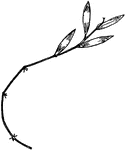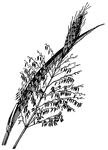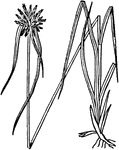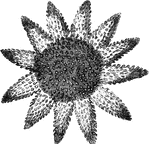
Common European sea-star
"The colors in this are variable but brilliant - red, purple, green, and white. It measures from nine…
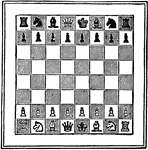
Chess Board
"Chess is the most purely intellectual of all games of skill, the origin of which has been much disputed,…

Conger Eel
"Conger is a large sea-eel, 5, 6, or, in rare cases, even 10 feet long. Its upper parts are brownish-white,…
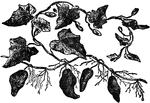
Convolvulus
"Convolvulus are a genus of plants, common in fields and hedges, especially when the soil is light.…

Date Palm
"Date Palm is a genus of palms, the most important species of which is the common date palm, the palm…
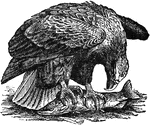
Sea Eagle
"Eagle is a name given to many birds of prey in the family Falconidæ. The golden eagle, the white-headed…

Emperor Moth
"The Emperor Moth, the general color greyish, with white hairs and purple tinges; wings with a hinder…

Erne
"The Erne is one of the 'bare-legged' eagles. The genus includes some seven species, represented apparently…
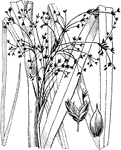
Cladium
Spikelets with the uppermost scale only enclosing an achene; our commonest species has saw-edged. cutting…

Goosander
"The Goosander is a web-footed bird in the duck family. The adult male, which measures 26 inches in…

Goosander
"The Goosander is a web-footed bird in the duck family. The adult male, which measures 26 inches in…
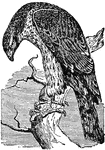
Goshawk
"Goshawk, or Goshauk (properly goose-hawk) is a bird of prey. It is brown above, white underneath, barred…

Hedgehog
"Hedgehog is a quadruped distinguished by having the body covered with spines instead of hair. The skin…
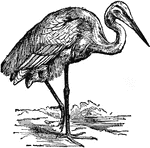
Heron
"Heron is the common name of birds of the genus Ardea. The herons are distinguished by having a long…
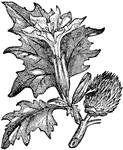
Thorn Apple
"Thorn Apple is a genus of plants. The common thorn apple is an annual plant, with smooth stem and leaves,…

Thorn Apple Bud
"Thorn Apple is a genus of plants. The common thorn apple is an annual plant, with smooth stem and leaves,…
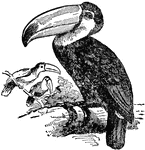
Toucan
"The Toucan, in ornithology, is the popular name of any bird of the genus Rhamphastos. They are all…

Turnstone
"Turnstone is a small genus of birds of the plover family, intermediate between the true plovers and…

Tussock Grass
"Tussock Grass is a large grass, same genus with the cock's-foot grass of the United States; native…
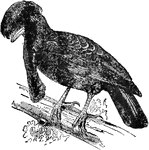
Umbrellabird
"The Umbrella Bird is a native of Peru. It is about the size of a crow, with deep black plumage; the…

Valerian
"Valerian is an order of herbs or rarely shrubs belonging to the division of monopetalous dicotyledons…
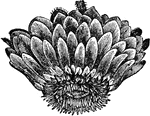
Victoria Regia
"Victoria Regia, named by Lindley after Queen Victoria, is the most magnificent of all known water lilies,…
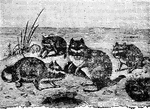
Viscacha
"Viscacha is a stout-built rodent, resembling a marmot, from 18 inches to two feet long, exclusive of…
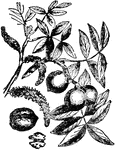
Walnut
"Walnut is a genus comprising seven or eight species of beautiful trees. The common walnut is a native…
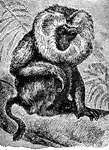
Wanderoo
"The Wanderoo, or Wanderu, is the Macacus silenus, from the S. of Hindustan, especially the country…
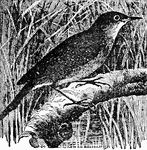
Reed Warbler
"Warbler is a popular name often applied to well-known singing birds of northern climes, whose notes…

Nest of Reed Warbler
"Warbler is a popular name often applied to well-known singing birds of northern climes, whose notes…

Hemlock Water Dropwort
"Water Dropwort is a genus of plants of the natural order Umbelliferæ. A number of species are…
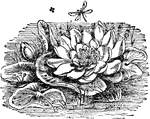
White Water Lily
"The Water Lily is an exogenous aquatic plant including eight genera, and all possessing submerged root…
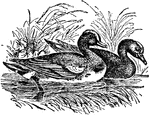
Wigeon
"Wigeon is one of the most popular birds with the American sportsman. Length about eighteen inches;…

Wormwood
"Wormwood is the genus Artemisia. The stem is one to three feet high, grooved, and angled; the leaves…
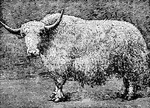
Yak
"Yak is a species of ox from the mountainous regions of Tibet. There are two races: the wild yak, generally…

Yucca
"Yucca is a genus of American plants, natural order Liliaceæ popularly known as Adam's needle.…

White fibrous tissue
"The connective tissue with white fibers sometimes forms a very thin sheet, as in the delicate covering…
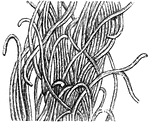
Yellow elastic tissue
"Along with white fibrous tissue, the yellow fibrous tissue... makes the coats of the arteries, and…

Longitudinal section of cartilage
"Showing (1) cartilage with martrix and cells; (2) cartilage with matrix containing cells and white…

Achillles tendon
"Tendons are white, glistening cords, or straps, which connect the muscles with the bones." —…

Iguana
"Iguana is a genus of saurian reptiles, natives of Brazil, Cayenne, the Bahamas, and neighboring localities…
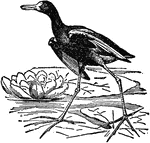
Jacana
"The Jacana is a wading bird; a genus of grallatores. They are very light birds; and the wide surface…

Jay
"Jay is the popular name of a species of birds belonging to the crow family, of a vinous red color;…

Papillae of the skin
"In each papilla are seen vascular loops (dark lines) running up from the vascular network below; the…
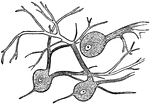
Nerve Cells of the Brain
"Wherever nerve cells are abundant, the nerve tissue has a gray color; in other places, it looks white.…
Portion of a medullated nerve fiber
"The axis cylinder is in the center. On either side is seen the medullary sheath, represented by dark…

Egyptian Water Lily
"Lotus is a name given to various flowers, including several beautiful species of water lily, especially…

Marsh Mallow
"The Marsh Mallow is a softly pubescent plant, with axillary cymes of large rosy leaves. a,…

Myrtle
"Myrtle is a genus of plants, natural order Myrtaceæ, consisting of aromatic trees or shrubs,…
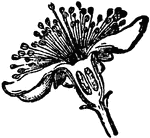
Myrtle Flower
"Myrtle is a genus of plants, natural order Myrtaceæ, consisting of aromatic trees or shrubs,…
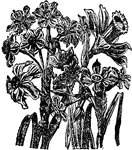
Narcissus
"Narcissus is an extensive genus of bulbous plants. The species are numerous, and from their hardiness,…

Nelumbium
"Nelumbium is the typical and only genus of the order Nelumbiaceæ. The species are remarkable…
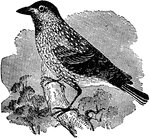
Nutcracker
"The Nut Cracker is a bird of Southern Europe. They feed on the seeds of pine and beech, and on nuts,…
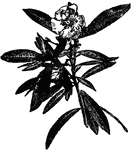
Oleander
"The Oleander is the common and sweet-scented oleander. They have lanceolate coriaceous leaves, with…

Osprey
"The Osprey, the fish hawk, bald buzzard, or fishing eagle. A bird of prey, of almost world wide distribution…

Chamaerops Humilis Palm
"Palm is a natural order of endogenous plants, the products of which are of extreme importance and utility…
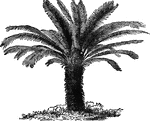
Cycas Revoluta Sago Palm
"Palm is a natural order of endogenous plants, the products of which are of extreme importance and utility…

